Crafting your very own rice water toner recipe is wonderfully simple. You're essentially tapping into an age-old beauty ritual that has, not surprisingly, become a viral sensation. At its heart, this DIY toner is just the starchy, nutrient-rich liquid left over after you soak or boil rice.
The Ancient Beauty Secret Behind Rice Water
Long before it was trending on your social media feed, rice water was a deeply cherished beauty secret with rich historical roots. This isn't just some fleeting internet fad; it's a practice passed down through generations, making it a genuine beauty treasure you can easily whip up in your own kitchen. Once you understand where it comes from, you'll see why this simple liquid has so completely captured the attention of modern skincare lovers.
A Time-Tested Tradition
The use of rice water for beautifying the skin and hair goes back more than a thousand years, especially within East Asian cultures. For centuries, women in ancient China and Japan relied on this milky water to cleanse their skin and hair, swearing by its ability to promote a radiant glow and shine.
This enduring trust in its gentle power is now being rediscovered all over the world, thanks in large part to social media, where the hashtag #ricewater has exploded with over 800 million views. You can read more about its modern comeback and historical importance on parentinghub.co.za.
This long history really speaks for itself. Unlike so many complex commercial products on the shelves today, the rice water toner recipe is built around a single, humble ingredient that has proven its gentle yet effective nature time and time again.
What Makes It So Effective?
The real magic of rice water is hidden in its composition. That starchy liquid is a natural cocktail of beneficial nutrients that your skin absolutely loves. When you soak or boil rice, it releases these key components directly into the water, creating a surprisingly potent treatment.
The secret is the blend of amino acids, vitamins, and minerals. These elements work in harmony to soothe, brighten, and protect the skin, offering a natural solution to common concerns like redness and irritation.
Here's a quick look at what's inside:
- Amino Acids: These are the essential building blocks for protein, crucial for keeping your skin firm and elastic.
- Vitamins B and E: Both are celebrated for their antioxidant properties, helping to nourish the skin and defend it against daily environmental stressors.
- Minerals: These contribute to your skin's overall health and help maintain a happy balance.
- Antioxidants: Compounds like ferulic acid are fantastic for neutralizing free radicals, which are known to contribute to the signs of aging.
This nutrient-packed profile is exactly why so many people report softer, brighter, and calmer skin after using it. For anyone looking to achieve that natural glow with simple steps, exploring rice water for skin is a fantastic place to start. It’s a powerful reminder that sometimes, the most effective skincare solutions really are the simplest ones.
Selecting the Best Ingredients for Your Toner
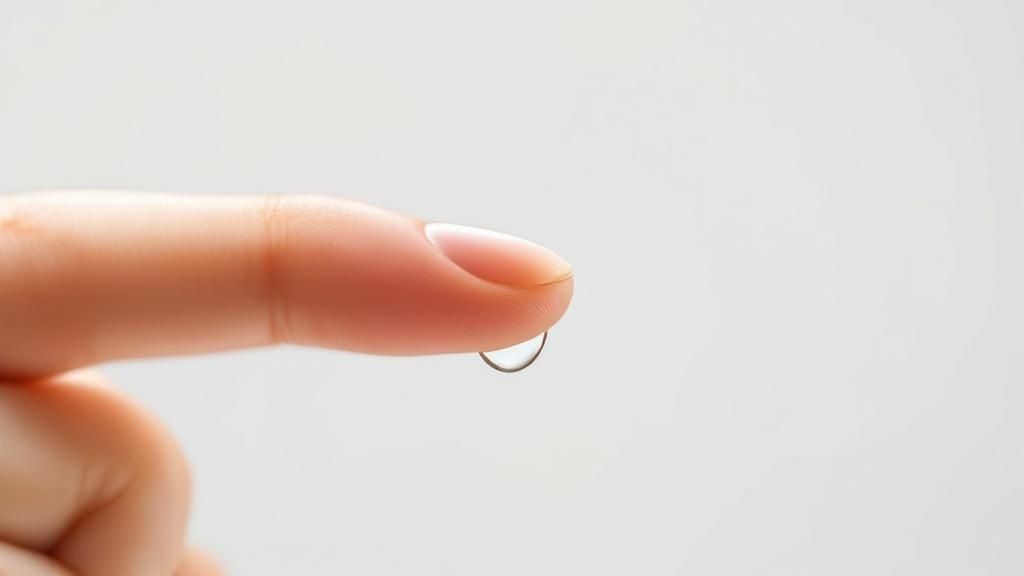
Any good homemade recipe starts with quality ingredients, and your rice water toner is no different. The foundation of this entire process is, of course, the rice itself. The specific type you choose directly impacts the nutrients your skin will soak up, so it's a decision worth thinking about.
While you can technically use any rice you have in your pantry, understanding the unique properties of different grains helps you tailor the final toner to what your skin truly needs.
Choosing Your Rice
Think of white rice, like jasmine or basmati, as your gentle, all-purpose starting point. It's a fantastic choice for anyone just starting out or for those with easily irritated skin. White rice releases a lot of starch into the water, which is incredibly soothing and helps calm down redness and inflammation.
On the other hand, if you’re looking for a bit more of an anti-aging kick, brown rice is your go-to. Because it's less processed, it still has its outer bran layer. This bran is where the real nutritional magic happens—it’s loaded with vitamins, minerals, and antioxidants that help protect your skin from daily environmental damage. If you're curious to learn more about this powerhouse component, you can explore the many benefits rice bran has for skin.
A Quick Tip on Sourcing: Whenever possible, I recommend reaching for organic rice. Since your toner is essentially a rice-infused water, you want to make sure you aren't steeping any unwanted pesticides or synthetic chemicals along with it. A clean source is always the best bet for your skin.
To make the choice a little easier, here's a quick comparison of the most common options.
Rice Selection Guide for Your Toner
| Type of Rice | Key Characteristics | Best For Skin Type |
|---|---|---|
| White Rice (Jasmine, Basmati) | High in soothing starch, gentle on the skin. | Sensitive, irritated, or acne-prone skin. A great beginner-friendly option. |
| Brown Rice | Nutrient-dense with an intact bran layer, rich in antioxidants. | Mature or dull skin, or anyone seeking anti-aging and protective benefits. |
| Black/Forbidden Rice | Very high in anthocyanins (antioxidants), contains vitamin E. | Skin needing antioxidant protection, anti-aging, and a brightening boost. |
| Organic Rice (Any Variety) | Free from pesticides and synthetic fertilizers. | All skin types, especially for those who prioritize clean, chemical-free skincare. |
Ultimately, the best rice is the one that aligns with your skin's current needs, but don't be afraid to experiment to see what your skin loves most!
Customizing Your Toner With Add-Ins
Once you've picked your rice, the fun really begins. This is where you can transform a simple rice water rinse into a personalized treatment that targets your specific skin concerns. A few simple additions can elevate your toner to a whole new level.
For example, if you're dealing with breakouts, adding just one or two drops of tea tree oil to your batch can make a world of difference. Its natural antibacterial properties are well-known for helping to keep acne-causing bacteria in check. Just remember, it's potent stuff, so a little goes a long way.
Looking for an antioxidant boost to fight off dullness and signs of aging? Try steeping a green tea bag in the water while your rice soaks. Green tea is packed with polyphenols that help protect the skin. Another one of my favorite additions is a splash of rosewater, which not only smells divine but is also celebrated for its hydrating and anti-inflammatory effects. These simple tweaks turn your DIY toner into a beautiful, multi-tasking product that treats your skin every time you use it.
Crafting Your Rice Water Toner Two Ways
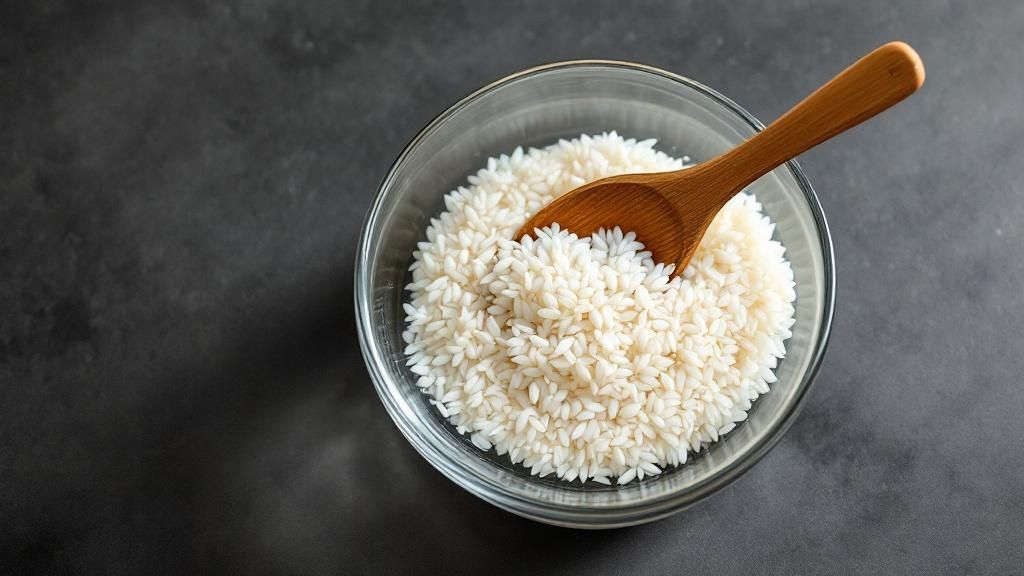
Alright, it’s time to create your own bottle of this liquid gold. The real beauty of a homemade rice water toner recipe is just how simple and adaptable it is. You really only have two main ways to prepare it, and each method offers its own unique perks.
First, there's the quick-soak method, which is perfect when you're pressed for time. The second is a fermentation process, a technique that unlocks a much more potent, nutrient-packed toner. Both start with the same simple foundation: just rice and water.
The Quick No-Boil Soaking Method
This is your express route to a fresh, homemade toner. I find this method is wonderfully gentle on the skin, which makes it an ideal starting point for beginners or anyone with a highly sensitive complexion. The goal here is pretty straightforward—we're just infusing the water with the rice's surface starches and water-soluble vitamins.
What You'll Need:
- 1/2 cup of uncooked rice (organic white or brown rice works beautifully)
- 2 cups of purified or distilled water
- A clean bowl and a jar or spray bottle for storage
First things first, give the rice a good rinse under some cool water. This step isn't about washing away the benefits; it’s about getting rid of any surface dust, dirt, or impurities. You definitely don't want that stuff sitting on your skin. Just swirl the rice around in a bowl with some water and then drain it.
After that initial rinse, pop the clean rice into your bowl and cover it with the 2 cups of fresh water. Now, let it soak for at least 30 minutes, though I find an hour is even better if you can spare it. You’ll see the water start to get cloudy and milky—that’s your signal that it’s working! This cloudy look comes from all the starches and minerals being released from the rice grains.
Finally, just strain the liquid into your clean jar or spray bottle. That's it! Your toner is ready to use. And please don't toss out the soaked rice; it’s perfectly fine to cook and eat, making this a fantastic zero-waste beauty practice.
The Potent Fermented Method
If you're looking to really elevate your toner's benefits, fermentation is the way to go. This ancient technique creates a liquid that's more acidic and incredibly rich in antioxidants. By fermenting, you lower the rice water's pH, bringing it much closer to your skin's natural pH, which is fantastic for supporting a healthy skin barrier. It also produces a host of other skin-loving compounds you don't get from the simple soak.
Fermented rice water contains a higher concentration of antioxidants and may even have anti-photoaging properties, helping to protect skin from damage caused by UV exposure. This makes it a more powerful version of the simple soaked toner.
To make it, you'll start with the exact same soaking process I described above. Get your rice water ready by soaking it for at least 30 minutes and then straining the liquid into a clean glass jar.
Now, instead of putting it in the fridge, leave the jar out at room temperature for 24 to 48 hours with the lid on, but not screwed on tightly. How long this takes really depends on how warm your room is; a warmer spot will speed things up. You'll know it's ready when it starts to develop a slightly sour or tangy smell.
That aroma is totally normal—it's just a byproduct of all the beneficial yeasts and bacteria doing their work. Once it reaches that stage, tighten the lid and move it to the refrigerator. This will stop the fermentation process. If you’re curious about other simple DIY skincare, our guide on the benefits of a rice water face wash has some more great insights.
A quick word of caution: because it's so potent, you should always patch-test fermented rice water before using it all over your face, especially if your skin is on the sensitive side. You might even want to dilute it with a bit of plain water for your first few applications until your skin gets used to it.
Using and Storing Your Homemade Toner Safely
Making your own rice water toner is a truly satisfying experience, but the real magic happens when you know how to use and store it correctly. Now that you've crafted a fresh batch, let's walk through how to apply it and keep it safe—after all, this is a natural recipe without any preservatives.
First things first: the patch test. Before you dream of putting any new product on your face, especially a potent fermented one, you absolutely must test it. Dab a small amount on a discreet spot, like your inner wrist or behind your ear. Give it a full 24 hours to see if your skin has any reaction like redness or irritation. This is a non-negotiable safety check for happy skin.
How to Apply Your Toner
Once you've passed the patch test, you're ready to work this toner into your daily routine. The best time is right after cleansing, before you apply any serums or moisturizers. How you apply it really comes down to personal preference and what feels best for your skin.
Here are a few ways I’ve found work great:
- Cotton Pad Method: The classic approach. Just soak a cotton pad with your rice water toner and gently sweep it over your face and neck. This is fantastic for picking up any lingering traces of cleanser while depositing a fine layer of nutrients.
- Refreshing Facial Mist: This is my personal favorite, especially for a quick pick-me-up. Pour the toner into a fine-mist spray bottle and spritz it all over your face. It's incredibly refreshing first thing in the morning or after a workout.
- Mini-Facial With a Sheet Mask: If you want a more intensive treatment, soak a compressed, disposable sheet mask in the rice water. Let it fully expand, then place it on your face and relax for 10-15 minutes. This really lets your skin soak up all that goodness.
Remember, consistency is what gets you results. Using your rice water toner once or twice a day gives your skin the best opportunity to show visible improvements in its texture and brightness.
Proper Storage and Spoilage
Because your homemade toner is a natural, water-based product without any commercial preservatives, it has a very short shelf life. If you don't store it correctly, bacteria and mold can move in quickly, which is the last thing you want on your skin.
Always store your toner in an airtight container in the refrigerator. This is the most critical step to slow down microbial growth. A fresh batch of either soaked or fermented rice water will stay good for up to one week in the fridge.
After that week is up, it's time to toss any leftovers and whip up a fresh batch. I know it can be tempting to stretch it, but it’s simply not worth the risk. A little trick I use is to label my container with the date I made it so there's no guesswork.
You also need to be able to spot the signs of spoilage. If you notice any of these, pour the toner down the drain immediately:
- A very strong, foul, or "off" smell (this will be much different from the mild sourness of a fresh fermented toner).
- Visible mold floating on the surface or cloudy bits in the liquid.
- A major change in the toner's color or consistency.
By following these simple rules for application and storage, you can safely enjoy all the wonderful benefits of your DIY skincare creation.
Why Natural Skincare Is More Than a Trend
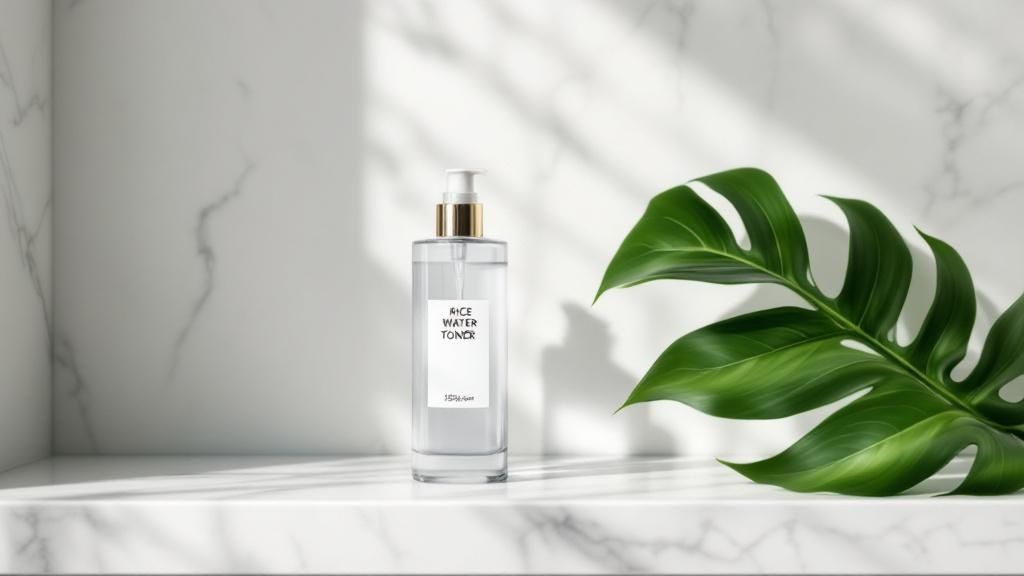
When you whip up your own rice water toner recipe, you're doing something much bigger than a fun DIY project. You’re tapping into a massive global shift toward clean, transparent, and sustainable beauty. It’s a powerful choice to know exactly what goes on your skin, stepping away from the long, confusing ingredient lists packed with synthetic compounds.
This isn't just a niche movement, either. The numbers tell a compelling story. The demand for products featuring rice water is skyrocketing, which shows just how many of us are looking for these kinds of natural solutions.
Just look at the haircare world. In 2023, the rice water haircare market was already valued at a staggering USD 1.23 billion. And it’s not slowing down—it's projected to climb by about 7.7% annually through 2030. That's some serious momentum, proving this isn't just a fleeting interest. The chart above gives you a clear visual of just how fast this market is growing.
This commercial success really validates the choice to make a fresh, potent version right in your own kitchen. You get to skip the preservatives and additives that are often necessary in mass-produced products.
The Power of Conscious Consumption
Choosing to create a homemade toner is a powerful statement. It's about taking back control and seeking authenticity in your personal care rituals. You're not just saving a few dollars; you're guaranteeing your skincare is fresh, preservative-free, and perfectly suited to what your skin needs right now.
This mindset is a cornerstone of many beauty philosophies, especially when you look at the top Japanese skincare brands that prioritize radiant skin using gentle yet highly effective ingredients.
Once you start embracing the benefits of natural ingredients for your body, it's a small leap to apply that same thinking to other parts of your life.
Choosing natural ingredients is about more than avoiding chemicals; it's about nourishing your body and environment with simple, effective, and time-tested solutions. It’s a return to trusting the efficacy of what nature provides.
This holistic approach can naturally spill over into other choices. For anyone looking to deepen their commitment to a natural lifestyle, exploring natural home fragrance options is a wonderful next step. By making thoughtful choices for your beauty cabinet and your living space, you build a more harmonious, healthy environment from the ground up. It’s proof that this is a lifestyle, not just a trend.
Common Questions About Rice Water Toner
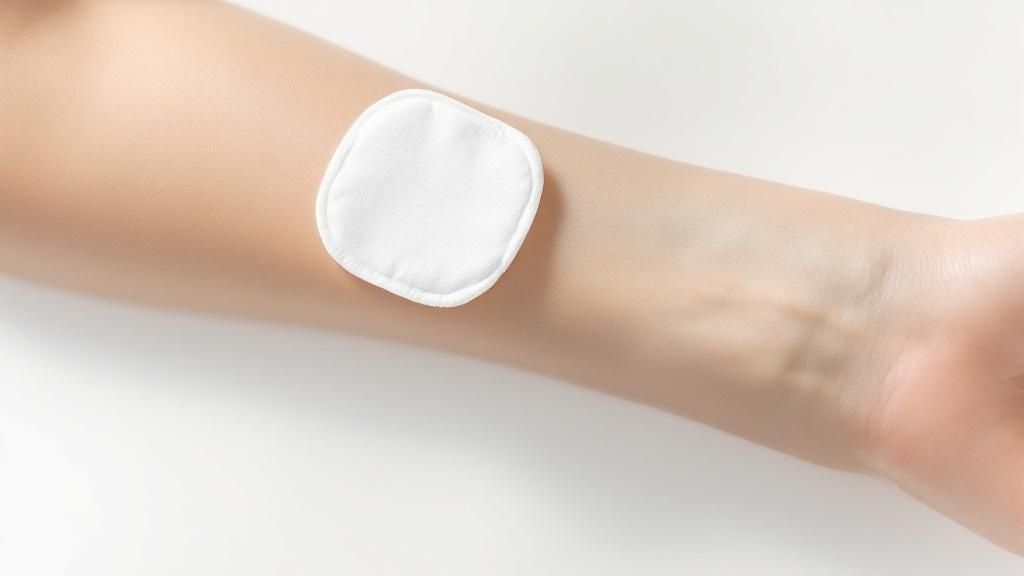
Even with a simple recipe, it's completely normal to have a few lingering questions about making and using your own rice water toner. Getting those last few details sorted out is what helps you start your new routine with confidence, knowing you're doing what’s best for your skin.
For most people, a basic soaked rice water toner is gentle enough to use every day, either once or twice after cleansing. I find it layers perfectly with serums and moisturizers without any pilling.
But if you have very sensitive skin or you're trying the more potent fermented version for the first time, it's always smart to start slow. Try using it every other day and just see how your skin feels.
Key Takeaway: The golden rule of skincare is to listen to your skin. If you notice any unusual redness, dryness, or irritation, that's your cue to pull back on how often you're using it. Finding the right rhythm is a personal journey.
And if you're looking to build out a full routine centered on powerful hydration, you might want to explore some of the top hyaluronic acid products from Japan. They complement a natural rice water toner beautifully.
What Is That Smell?
One of the first things you'll notice about fermented rice water is its unique aroma. It's often described as slightly sour or tangy—this is a good thing! That scent is a totally normal sign that the fermentation process was successful.
It's the direct result of all those beneficial bacteria and yeasts doing their work, which is what boosts the toner's nutrient profile. The smell is usually mild and fades almost immediately after you apply it to your skin.
However, if your toner ever develops a truly foul, strong, or unpleasant odor, it has likely spoiled. Don't risk it—just toss that batch and whip up a fresh one.
More Common Queries
Here are a few other questions that pop up all the time:
- How long until I see results? While your skin might feel softer right away, the more significant benefits—like a brighter complexion and more even skin tone—take time and consistency. I'd say give it at least 2-4 weeks of regular use to really see what it can do.
- Can I cook the rice afterward? Absolutely! Using the rice after soaking or boiling is a fantastic way to prevent waste. Just cook it up as you normally would. It’s one of my favorite things about this DIY—it's a truly zero-waste beauty practice.
- Is it safe for fungal acne? Plain rice water toner is generally considered safe for skin prone to fungal acne because it doesn't contain the oils or esters that can feed Malassezia yeast. That said, you should always patch-test first and be cautious about any other ingredients you might add.
At Buy Me Japan, we believe in the power of simple, effective ingredients. Explore our curated selection of top-tier Japanese beauty and skincare products to complete your routine. Start shopping now!

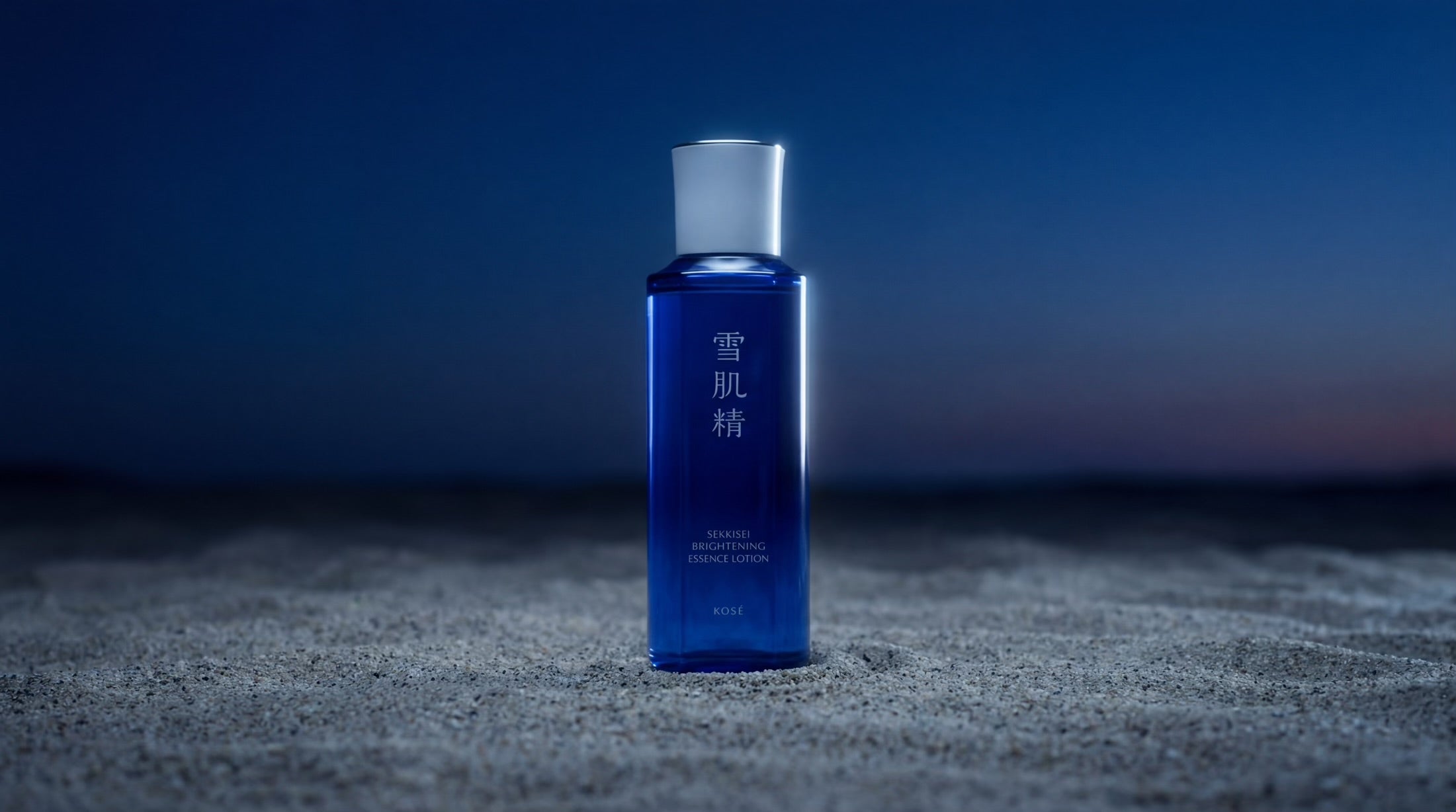
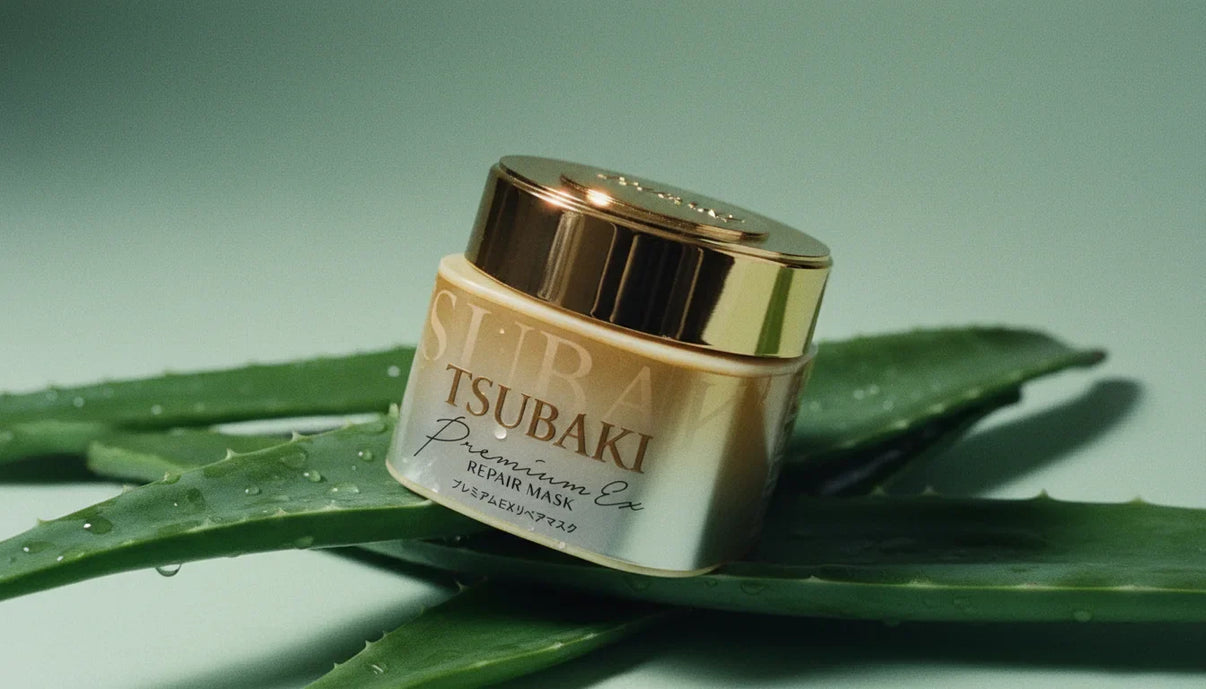
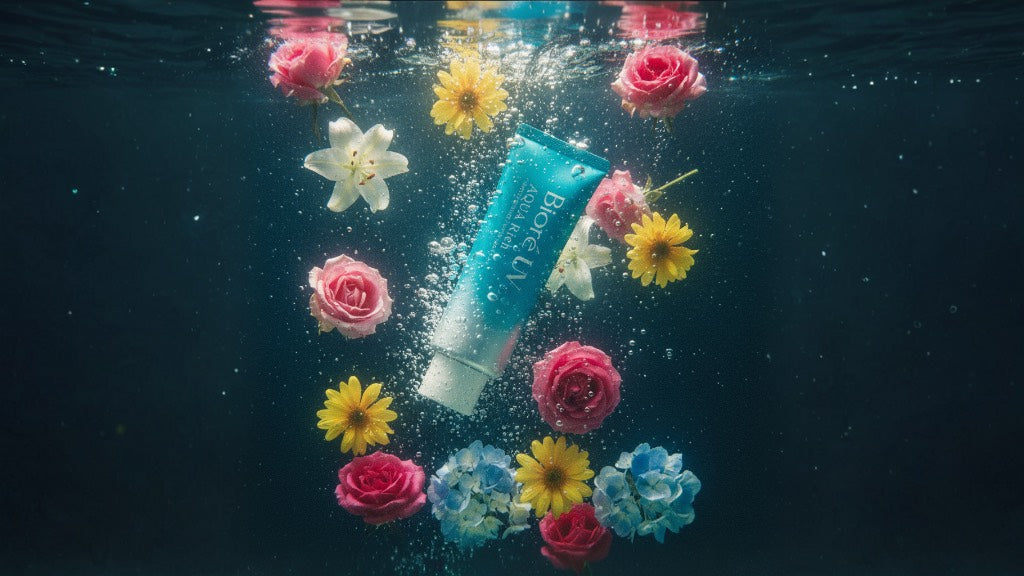
Share:
7 Top Sources for Hyaluronic Acid Japan Skincare in 2025
Discover Japanese Beauty Secrets for Radiant Skin